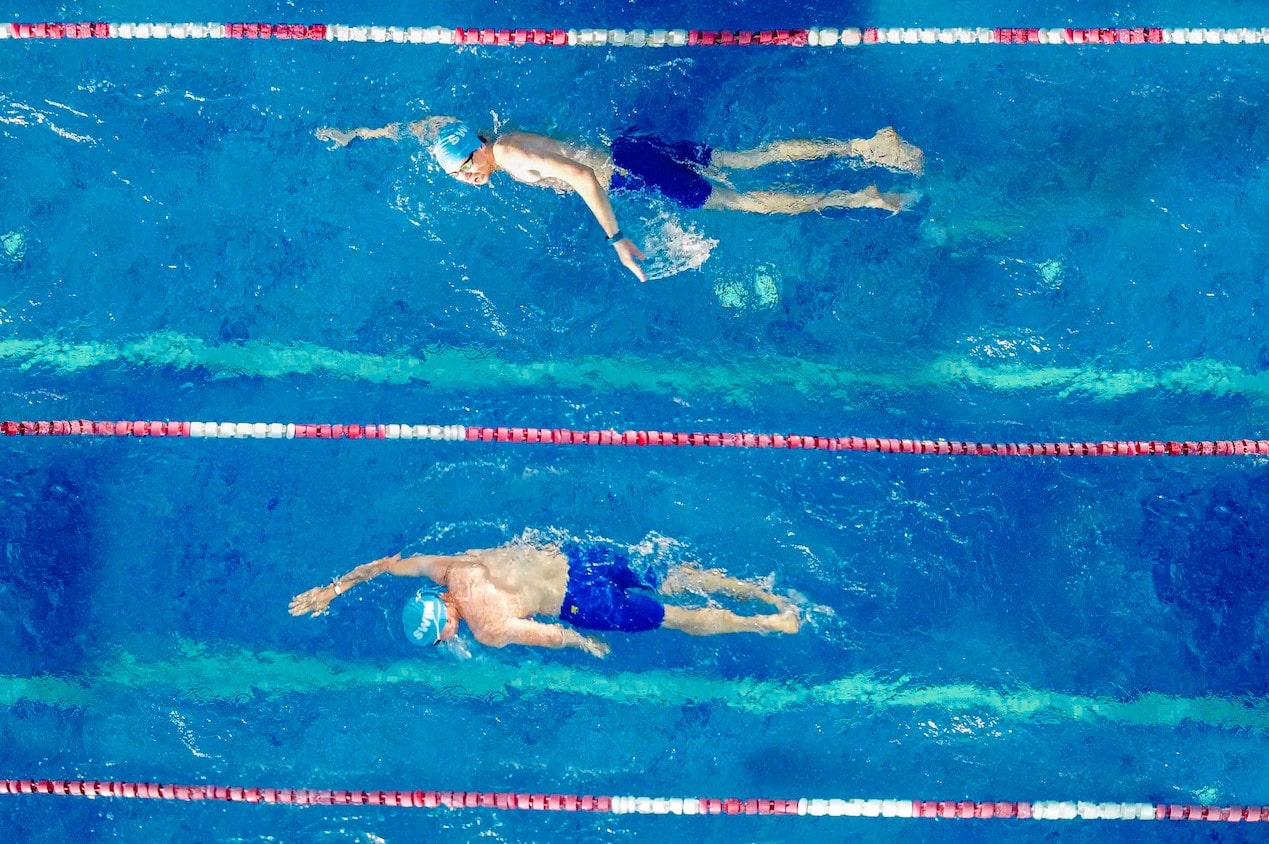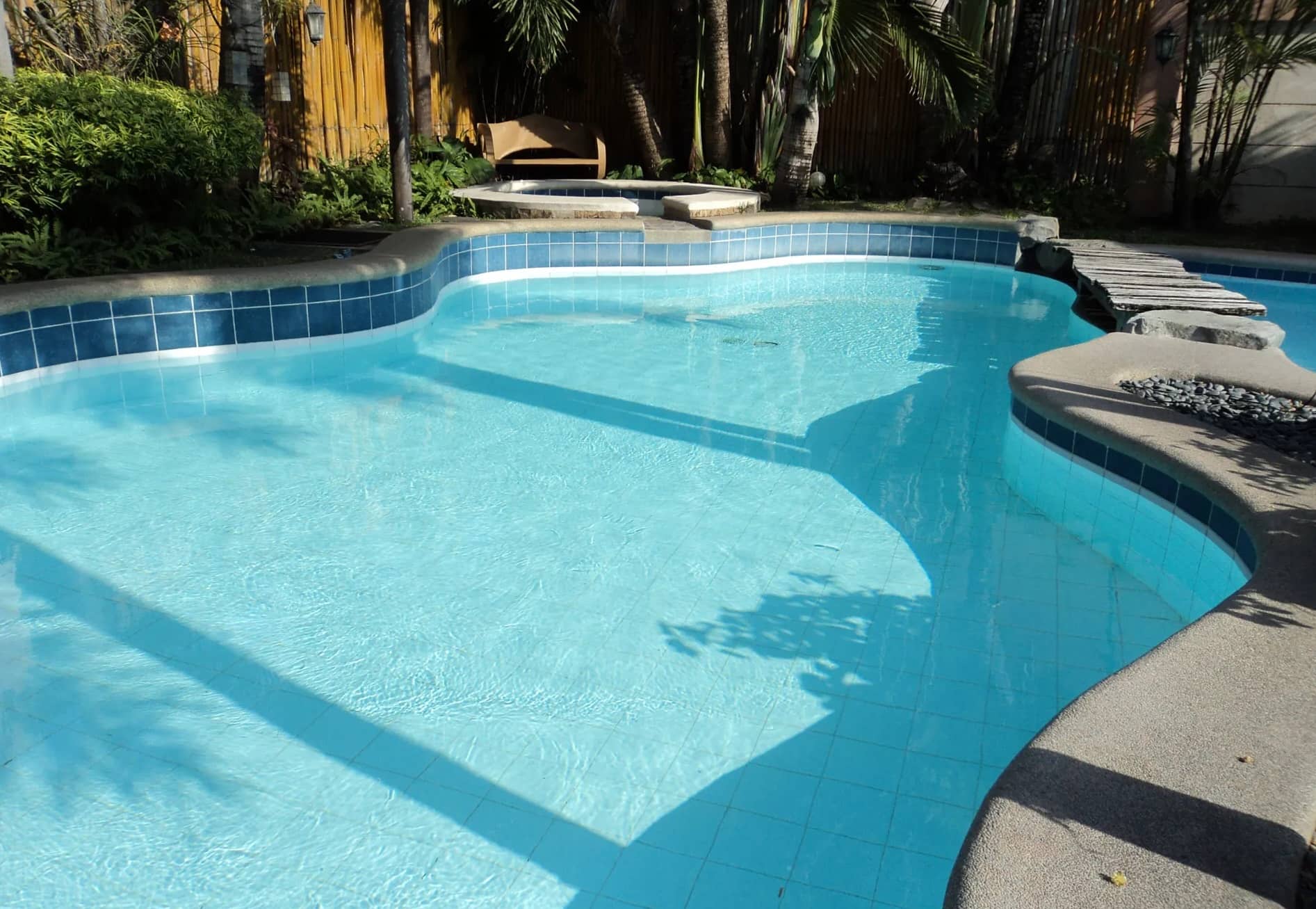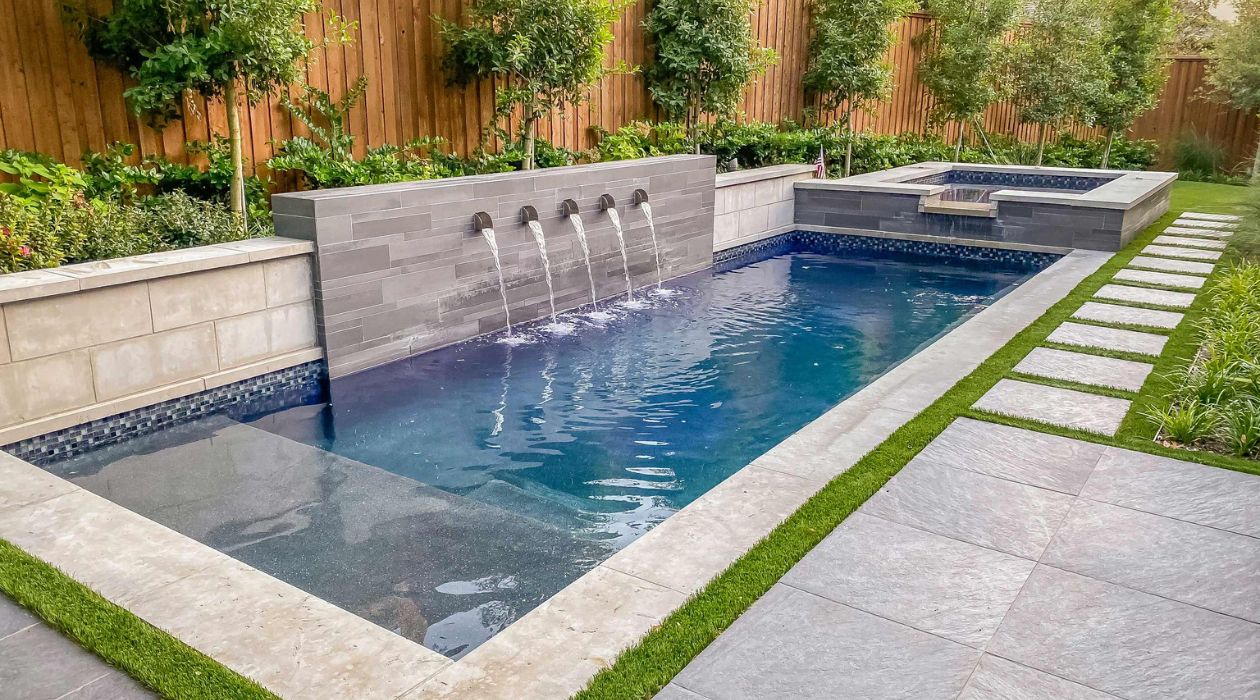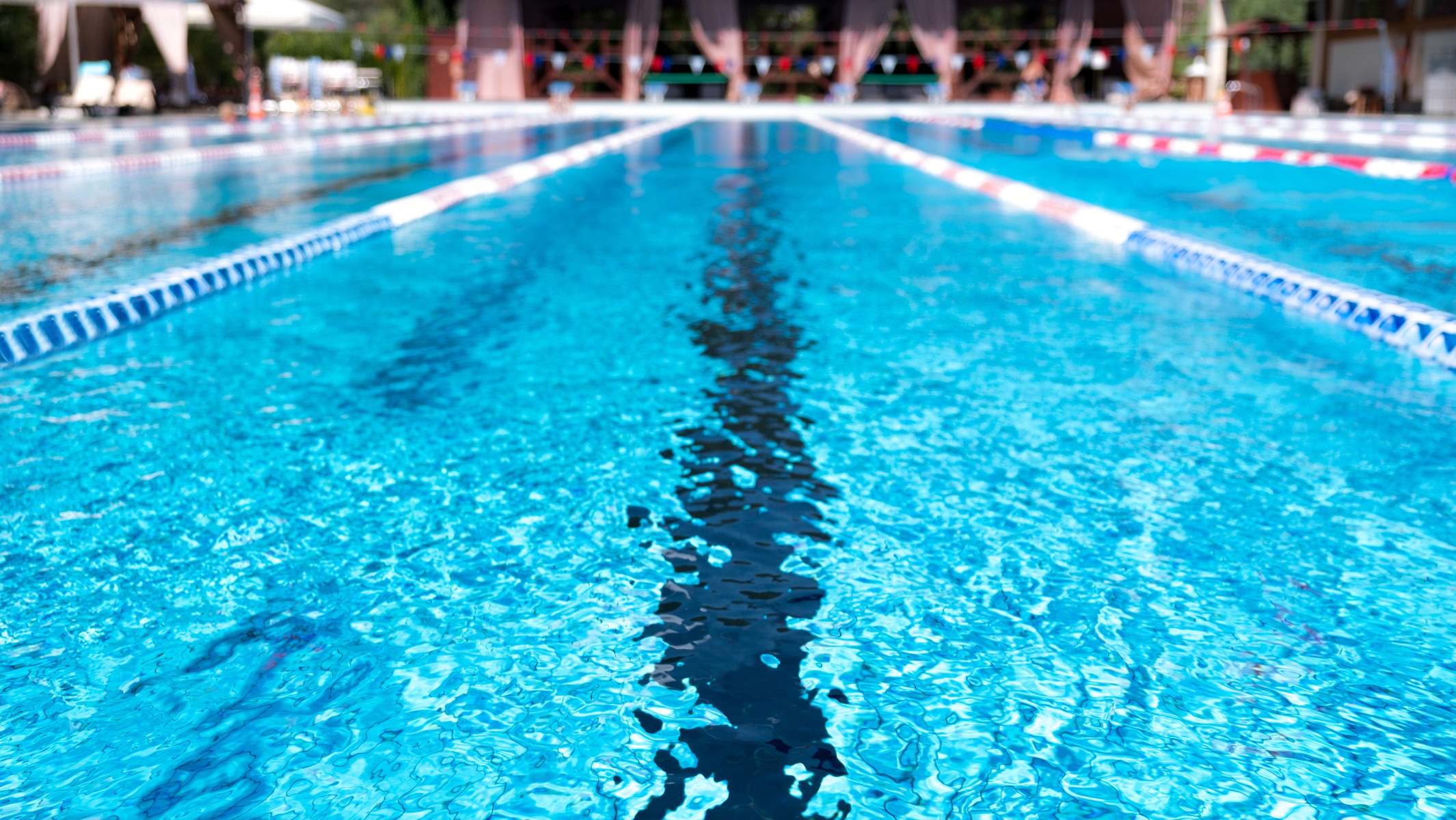Home>Gardening & Outdoor>Outdoor Recreation & Activities>How Many Yards In A Swimming Pool


Outdoor Recreation & Activities
How Many Yards In A Swimming Pool
Modified: March 2, 2024
Discover the ideal yardage for your outdoor recreation and activities with our guide on how many yards are in a standard swimming pool. Dive in now!
(Many of the links in this article redirect to a specific reviewed product. Your purchase of these products through affiliate links helps to generate commission for Storables.com, at no extra cost. Learn more)
Introduction
When it comes to swimming, the size of the pool can greatly impact the overall experience. Whether you're a competitive swimmer, a casual lap swimmer, or someone who simply enjoys a refreshing dip, understanding the dimensions of a swimming pool is essential. One common question that arises is, "How many yards are in a swimming pool?" This question is particularly relevant for swimmers who are training for competitions or simply want to track their progress.
The length of a swimming pool is a key factor in determining the number of yards it contains. This measurement is crucial for swimmers who are training for events that require specific distances, such as competitive swimming meets or triathlons. Additionally, knowing the length of a pool is essential for anyone looking to calculate the number of laps needed to reach a certain distance, whether for fitness or training purposes.
In this article, we will delve into the standard sizes of swimming pools, explore how to accurately measure the length of a pool, and discuss the process of calculating the number of yards in a swimming pool. By the end of this article, you will have a comprehensive understanding of how pool dimensions are determined and how to calculate the distance covered while swimming laps. So, let's dive in and explore the fascinating world of swimming pool measurements!
Key Takeaways:
- Dive into the world of swimming by understanding pool sizes and how to measure them. Whether for fun or competition, knowing the dimensions enhances your swimming experience!
- Calculate the number of yards in a swimming pool to plan workouts and track progress. With the right measurements, you can swim with confidence and precision!
Read more: How Many Liters Is A Swimming Pool
Standard Swimming Pool Sizes
Swimming pools come in various sizes, each catering to different needs and preferences. Whether you're a professional swimmer, a recreational enthusiast, or a fitness-conscious individual, understanding the standard sizes of swimming pools is essential. Here are the typical dimensions of swimming pools:
Residential Pools
-
Small Pools: These compact pools are ideal for limited outdoor spaces and are commonly found in urban homes or smaller properties. They typically measure around 12 feet by 24 feet, providing enough space for relaxation and leisurely swimming.
-
Medium Pools: With dimensions ranging from 14 feet by 28 feet to 16 feet by 32 feet, medium-sized pools offer a balance between space and practicality. They are suitable for families and individuals seeking a versatile swimming and recreational area.
-
Large Pools: Designed for spacious backyards and outdoor entertainment, large residential pools typically measure 18 feet by 36 feet or 20 feet by 40 feet. These pools provide ample room for swimming, water games, and social gatherings.
Commercial Pools
-
Community Pools: These pools are commonly found in public recreational facilities, schools, and fitness centers. Ranging from 25 meters to 50 meters in length, community pools accommodate various activities, including lap swimming, water aerobics, and swimming lessons.
-
Competition Pools: Designed to meet the standards of competitive swimming, these pools are precisely measured to ensure accuracy during races and time trials. The standard competition pool size is 25 meters in length, with some facilities featuring 50-meter pools for Olympic-level training and events.
-
Resort Pools: Often characterized by luxurious amenities and expansive layouts, resort pools vary in size and design. They can range from 50 feet by 100 feet to larger dimensions, offering a lavish setting for relaxation, aquatic sports, and social gatherings.
Understanding the standard sizes of swimming pools is essential for homeowners, facility managers, and swimming enthusiasts. Whether you're planning to install a residential pool or seeking a suitable venue for swimming activities, knowing the typical dimensions of pools will guide your decision-making process and enhance your overall swimming experience.
How to Measure the Length of a Swimming Pool
Accurately measuring the length of a swimming pool is crucial for various reasons, including competition compliance, lap counting, and overall pool maintenance. Whether you're a pool owner, a swim coach, or a competitive swimmer, knowing how to measure the pool's length correctly is essential. Here's a detailed guide on how to measure the length of a swimming pool:
Read more: How Many Liters In An Olympic Swimming Pool
Step 1: Gather the Necessary Tools
Before measuring the pool, ensure you have the appropriate tools on hand. A long measuring tape, ideally one designed for outdoor use, is essential for obtaining precise measurements. Additionally, having a helper to hold one end of the tape can make the process more efficient and accurate.
Step 2: Position the Measuring Tape
Start by positioning the measuring tape at one end of the pool, ensuring it is taut and straight along the pool's edge. If the pool has a rounded or irregular shape, consider using a flexible measuring tape to conform to the curves and angles accurately.
Step 3: Extend the Tape to the Opposite End
Carefully extend the measuring tape to the opposite end of the pool, ensuring it follows the entire length without sagging or twisting. If the pool has distinct features such as steps, shallow areas, or a separate wading area, measure each section separately to obtain a comprehensive understanding of the pool's total length.
Step 4: Record the Measurement
Once the measuring tape spans the entire length of the pool, take note of the measurement. It's advisable to double-check the recorded length to ensure accuracy. If the pool has additional features such as a diving well or a separate spa section, these should be measured and documented separately.
Read more: How Many Swimming Pool Laps Is A Mile
Step 5: Consider the Water Line
In some cases, the water level in the pool may affect the measurement. If the pool is filled to a certain level during the measurement, be mindful of the water line's impact on the overall length. For precise measurements, consider conducting the process when the pool is empty or at a consistent water level.
By following these steps, you can accurately measure the length of a swimming pool, providing valuable information for various purposes, including lap counting, event planning, and maintenance assessments. Whether you're a homeowner seeking to verify your pool's dimensions or a professional in the swimming industry, mastering the art of measuring a pool's length is a valuable skill that ensures accuracy and efficiency in pool-related activities.
How to Calculate the Number of Yards in a Swimming Pool
Calculating the number of yards in a swimming pool is essential for swimmers, coaches, and fitness enthusiasts. Whether you're aiming to track your swimming distance, plan a workout routine, or prepare for a competitive event, knowing how to determine the number of yards in a pool is a valuable skill. Here's a comprehensive guide on calculating the distance in yards within a swimming pool:
Step 1: Understand the Pool's Length Measurement
The first step in calculating the number of yards in a swimming pool is to understand the pool's length measurement. In most cases, swimming pools are measured in either meters or feet. For instance, a standard competitive pool is 25 meters long, while others may be measured in feet, such as a 50-foot residential pool. Understanding the pool's length measurement is crucial for accurate distance calculations.
Step 2: Convert the Length to Yards
To convert the pool's length to yards, it's important to know the conversion factors. Since 1 meter is approximately equal to 1.09 yards, and 1 foot is equal to 0.33 yards, you can use these conversion factors to determine the pool's length in yards. For example, if a pool is 25 meters long, the calculation would be 25 meters x 1.09 yards/meter, resulting in approximately 27.25 yards. Similarly, for a 50-foot pool, the calculation would be 50 feet x 0.33 yards/foot, yielding approximately 16.5 yards.
Read more: How Many Lanes In An Olympic Swimming Pool
Step 3: Consider the Pool's Shape and Additional Features
When calculating the number of yards in a swimming pool, it's important to consider the pool's shape and any additional features that may impact the overall distance. Irregularly shaped pools, such as those with curved or asymmetrical designs, may require more complex calculations to determine the total yardage accurately. Additionally, pools with attached spa sections, diving wells, or shallow areas should be measured separately to account for the total distance covered while swimming laps.
Step 4: Verify the Calculated Distance
Once the pool's length has been converted to yards and any additional features have been accounted for, it's advisable to verify the calculated distance. Double-checking the yardage ensures accuracy and provides confidence in the obtained measurement. This step is particularly important for competitive swimmers and coaches who rely on precise distance calculations for training and performance evaluation.
By following these steps, swimmers, coaches, and pool owners can accurately calculate the number of yards in a swimming pool, enabling them to plan and track swimming distances effectively. Whether you're striving to achieve fitness goals, preparing for a swimming competition, or simply enjoying a leisurely swim, understanding the yardage in a pool enhances the overall swimming experience and facilitates informed training and recreational activities.
Conclusion
Understanding the dimensions and measurements of a swimming pool is essential for swimmers, coaches, and pool owners alike. From standard pool sizes to the process of measuring a pool's length and calculating the number of yards, this comprehensive guide has shed light on the intricacies of pool dimensions and their significance in the world of swimming.
By exploring the standard sizes of residential and commercial pools, individuals gain valuable insights into the diverse options available for recreational, fitness, and competitive swimming activities. Whether it's a compact pool for urban homes or a meticulously designed competition pool for professional swimmers, the range of pool sizes caters to various needs and preferences, enriching the swimming experience for enthusiasts of all levels.
The detailed instructions on measuring the length of a swimming pool provide a practical framework for obtaining accurate dimensions, essential for lap counting, event planning, and maintenance assessments. By following the step-by-step process, pool owners, coaches, and facility managers can ensure precision in their pool-related activities, contributing to a safe and efficient swimming environment.
Furthermore, the guide on calculating the number of yards in a swimming pool equips swimmers, coaches, and fitness enthusiasts with the knowledge to plan and track swimming distances effectively. By understanding the conversion factors and considering the pool's shape and additional features, individuals can confidently determine the yardage in a pool, facilitating informed training, performance evaluation, and recreational swimming activities.
In conclusion, the dimensions of a swimming pool extend beyond mere measurements; they form the foundation for enjoyable, purposeful, and safe swimming experiences. Whether it's the thrill of competitive races, the tranquility of leisurely laps, or the health benefits of aquatic fitness, the understanding of pool dimensions enhances every aspect of the swimming journey. With this newfound knowledge, swimmers and pool enthusiasts are empowered to dive into the world of swimming with confidence, precision, and a deeper appreciation for the art and science of pool dimensions.
Frequently Asked Questions about How Many Yards In A Swimming Pool
Was this page helpful?
At Storables.com, we guarantee accurate and reliable information. Our content, validated by Expert Board Contributors, is crafted following stringent Editorial Policies. We're committed to providing you with well-researched, expert-backed insights for all your informational needs.













0 thoughts on “How Many Yards In A Swimming Pool”